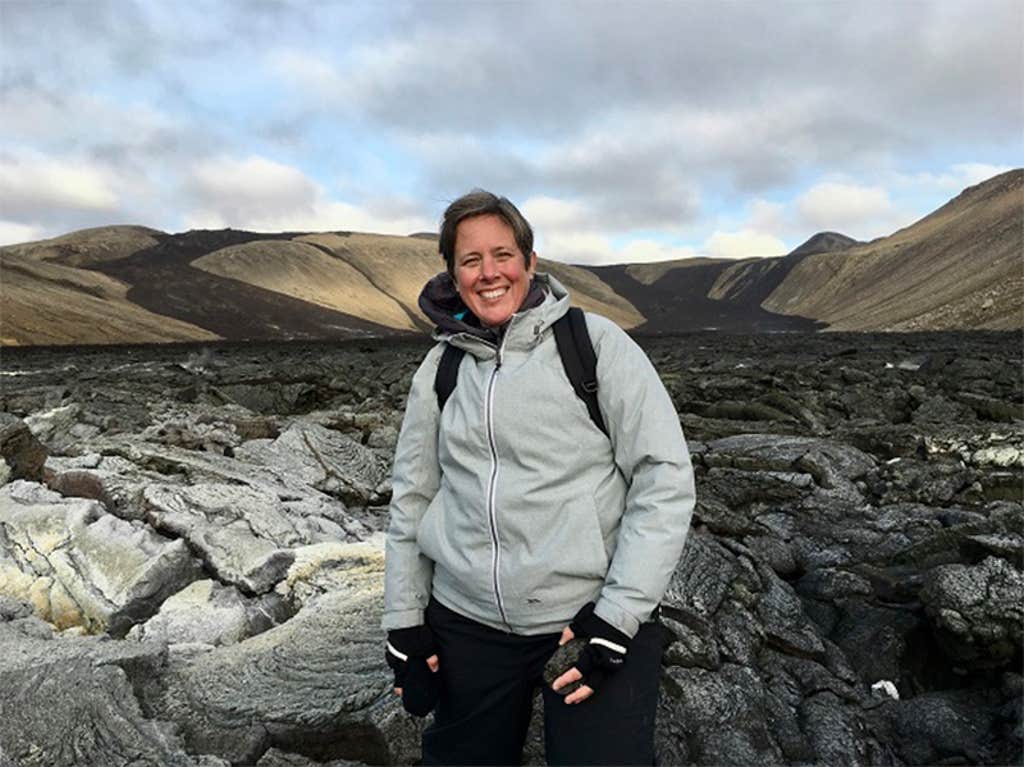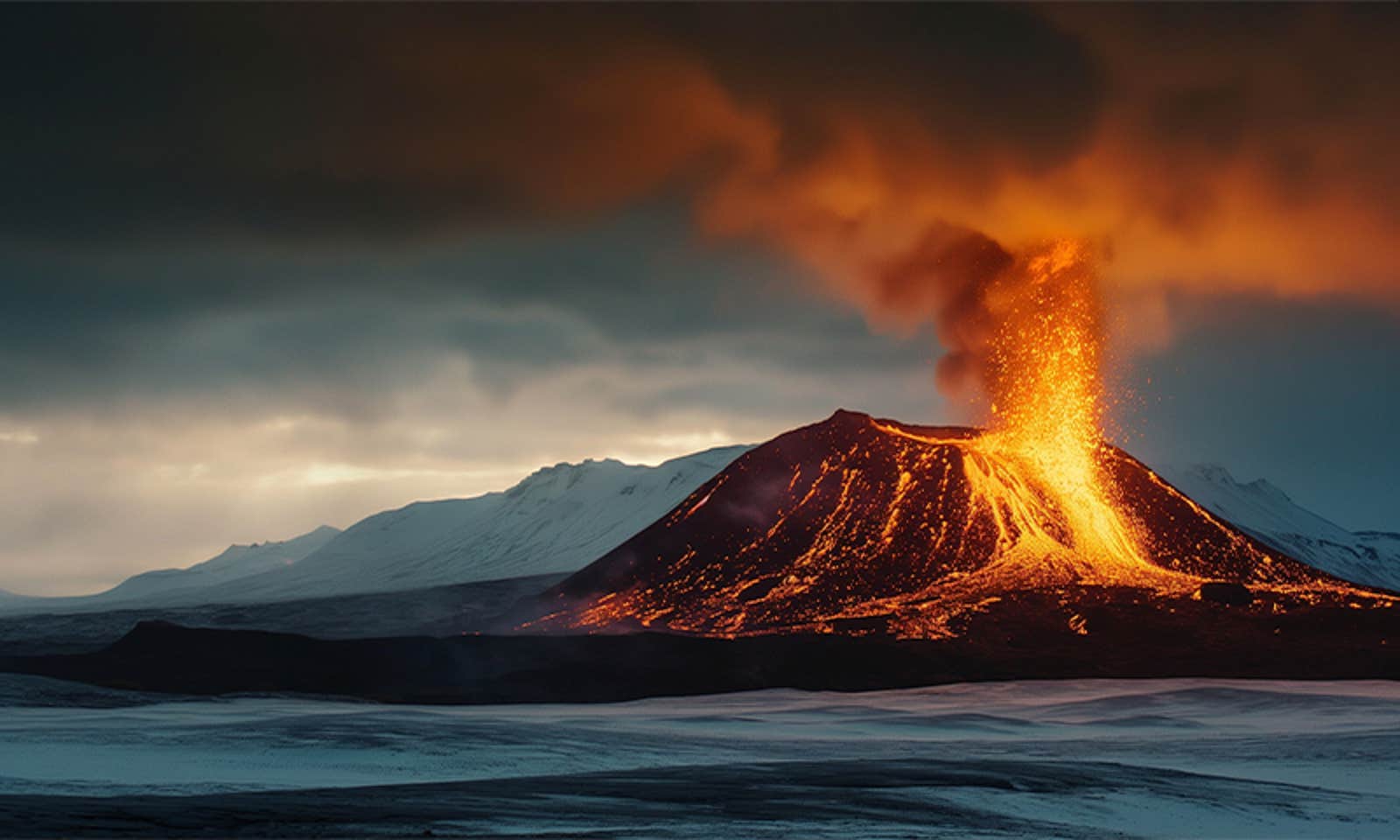1 For centuries we thought that volcanoes were on fire.
Volcanic eruptions are spectacular as well as terrifying, and in the era before color photos and video footage, they were, in some ways, difficult to describe. For the uninitiated, the language of fire provides a familiar lexicon to capture volcanic phenomena, and it is branded into our subject. The finest sand-like products of volcanic explosions are known as “ash.” Vigorous displays of volcanic activity in places like Kīlauea on Hawaii or Etna in Italy are described as fire fountains—just right to convey what is seen. The names for many volcanoes around the world translate as “fire mountain,” across languages and cultures.
Writing my new book Adventures in Volcanoland pushed me to delve deeper into the history of human thinking about volcanism. Here, I discovered that advancing from a belief that volcanoes resulted from actual fire to our current scientific understanding of them as being driven by hot gas bursting forth from red-hot molten rock was a major development in our comprehension of our planet.
The cradle of European civilization happens to share geography with a collection of active volcanoes: Vesuvius, Etna, Stromboli, and Vulcano in Italy, and Santorini in Greece. This means that we have records of how thinkers from Western antiquity theorized about volcanism and its causes. It is from Vulcano—named after the Roman god of fire and metalwork—that we take our word “volcano.” The ancient Romans imagined that volcanoes were smokestacks for giant internal furnaces fuelled by coal, bitumen, or sulfur inside the Earth. They imagined a great network of flues within the planet. Volcanoes were where these inner fires burst forth, like safety valves.

These classical ideas of volcanoes fed into medieval Christian images of hellfire. Volcanoes were the chimneys of hell, their activity a consequence of human sins, their roars the screams of tormented souls. Even in the 1800s, illustrious thinkers like the British chemist Humphry Davy still had burning at the heart of volcanic theory—in his case fuelled by large subterranean supplies of reactive metals rather than the likes of coal. Davy liked to illustrate his theory by constructing spectacular artificial volcanoes out of clay, packed with metals like potassium and ignited by water. His thinking even seeped into literature, with Jules Verne’s 1864 classic Journey to the Center of the Earth drawing on his explanation for volcanism to make the fantastical voyage into our planet’s innards a theoretical possibility.
Despite their names however, on detailed inspection, the rocky products of volcanism do not bear perfect resemblance to the ash and cinders from a forge or furnace. By the end of the 19th century, geology as a field of study was established within the Western world and it was widely agreed that volcanoes were not driven by burning. Volcanic “smoke” was realized to be condensing steam or other vapors rather than combustion fumes, and the “flames” were instead related to glowing hot molten material. This moved the problem from locating internal fuel to working out the source of the molten rock within the Earth, a question intimately entangled with our planet’s inner structure.
Our intellectual journey away from thinking of volcanoes as vents for Earth’s internal fires has drawn on all the tools laid out not only by the great expositions of geology but also the fundamental findings across the breadth of human sciences. Since the 1960s, understanding of volcanism has sat as part of our unifying theory of plate tectonics but there is still much to understand and this is what keeps my work endlessly fascinating.
2 Krakatoa opened our eyes to volcanoes’ planetary-scale impacts.
Large explosive eruptions of volcanoes such as Mt. Pinatubo in the Philippines in 1991 punch huge quantities of gas and particles into our planet’s stratosphere. At these lofty heights, especially for tropical eruptions, emissions like sulfur dioxide gas can stretch out forming an invisible layer high above our heads covering great swaths of the Earth. This forms a veil of volcanic haze (mainly fine droplets of sulfuric acid) and can have global effects such as reflecting the sun’s energy back into space and cooling surface temperatures or leading to spectacularly colorful sunsets.
The advent of satellites in the mid 20th century really revolutionized our ability to understand these processes, allowing us to track volcanic emissions and their effects as they spread. But writing Volcanoland and reading more about past events brought home to me how important earlier technologies, developed long before constellations of sensors routinely peered down on us from orbit, had been to our understanding of these phenomena.
I have been actively and overtly obsessed by volcanoes ever since.
In 1815 Mount Tambora volcano on the island of Sumbawa, in what is now Indonesia, blew in the largest known explosive eruption of the last 500 years, killing at least 71,000 people. This eruption perturbed global weather patterns and the year 1816 is known by some as “the year without a summer.” But despite the juxtaposition in many newspapers of the coverage of the bad weather with reports of a large volcanic eruption, no one joined the dots to link the two at the time.
Scroll forward to 1883, when Indonesia’s Krakatau volcano exploded, killing about 36,000 people and devastating much of the island and its surrounding archipelago. By that time, the first undersea telegraph cables had been laid, enabling the news to spread rapidly, and the eruption made headlines across the world within just hours of its blast. Despite being about 10 times smaller than the earlier Tambora eruption, the Krakatau catastrophe instantly became a global event. This rapid dissemination of the news allowed observers around the planet to link what might otherwise have seemed like disparate effects, such as atmospheric pressure waves and fiery sunsets, to this distant cataclysm. This opened our eyes to the power of volcanism to transform the environment on a global scale and gave us new insights into the interconnectivity of the global climate system. The advent of human ability to transmit information at lightning speed opened new insights into geological processes that span the eons.
3 I have loved volcanoes for longer than I realized.
Before writing Volcanoland, I told everyone who asked that I became a volcanologist by accident. This was in contrast to many colleagues, whose imaginations were ignited by volcanoes in childhood, setting them on a clear path. While I stand by my original narrative—my route to the career was still surprising and circuitous—the more I delved back into my own past as I wrote the book, the more I saw that a passion for volcanoes had been lurking in my subconscious for longer than I was aware.
Space and astronomy were my first loves in science, but it was chemistry for which I had a flair in academics and which I ended up pursuing at university. After graduation, I had the revelation that I could marry my love of nature and the great outdoors with my love of science, and I started looking for Ph.D.s in environmental chemistry. As a second choice, almost an afterthought, I considered atmospheric chemistry of volcanic plumes. But when I went for an interview something clicked, and I realized volcanoes were for me.
I started graduate research in the year 2001 and have been actively and overtly obsessed by volcanoes ever since then. But in writing the book I wanted to put myself back in the mindset of a volcano novice, to try to do a better job of explaining them. This took me back to my own personal history of discovery. Revisiting a childhood diary, I recalled a trip as a 10-year-old to Vesuvius, Pompeii, and Herculaneum, where I was first gripped by the power of volcanic eruptions. The death casts of Vesuvius’ victims—created by injecting plaster of Paris into the voids left in the volcanic debris once their remains had decayed away—on display at Pompeii made a particular impression: hands often clasped to their faces as they attempted to flee, or curled up in a vain reflex to protect themselves against the searing tumult.
Many years later, when I was studying chemistry at university, two friends and I traveled to La Réunion island in the Indian Ocean to visit another friend, who was teaching there for a year. While we were there, we witnessed an eruption of its volcano, the Piton de la Fournaise, at close quarters. The raw power of the volcanic outbursts, the fuming lava flows, and the hazy orb of the sun filtering through the acrid gasses left a lasting impression. I had the photos from this trip on my bedroom walls for my remaining years at university and still have them up in my office now. Today, they are curled and dog-eared from time and wear. The January after that trip to La Réunion, the friend I visited there made me a collage of random images; among them a cross section through a volcano, with a dedication: “Happy Epiphany 1999.” It took another two years for my volcanic epiphany to strike, setting me on this path, but I am forever glad it did. ![]()
Lead image: Dimitri Tymchenko / Shutterstock




























